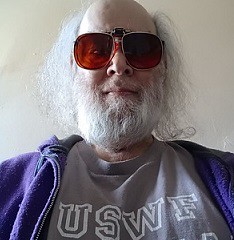Wednesday, December 28, 2005
Boxing Ninth Most Popular Sport in America, Says Harris Survey; Can UFC Catch Up?
According to a nationwide survey conducted by Harris Interactive, boxing is the ninth most popular sport among adults in America. In this survey, two percent of the respondents stated that boxing was their favorite sport.
Topping the list was professional football at 33 percent, followed by baseball at 14 percent, college football at 13 percent, and auto racing at 11 percent. Also ahead of boxing were men's college basketball (5%), hockey (5%), men's pro basketball (4%), and men's golf (4%). Boxing finished ahead of men's soccer, horse racing, men's tennis, women's tennis, bowling, women's pro basketball, women's college basketball, women's soccer, track & field, and women's golf, which ranged also from two percent down to under one percent.
The survey was conducted online between December 8 and 14, 2005, among 1,961 U.S. adults, of whom 1,402 follow at least one sport. The question reported was, "If you had to choose, which ONE of these sports would you say is your favorite?" They either did not ask the respondents to rank their next choices, or else did not release that data.
(Disclosure time: I used to work for Louis Harris and Associates under its previous ownership.)
Although this question was first asked of respondents back in 1985 and the responses by sport tracked since then, boxing was only added to the list of sports offered in 2004. It also scored two percent last year, although then that placed it behind men's soccer, which had three percent last year.
A demographic breakdown for boxing fans was also not released.
As for the accuracy of this poll, according to the Harris press release, "In theory, with probability samples of this size, one could say with 95 percent certainty that the overall results have a sampling error of plus or minus 2.5 percentage points of what they would be if the entire U.S. adult population had been polled with complete accuracy."
From my own observations working in past years with polls and this company, I can conclude that this ranking for boxing is in general, as a ballpark figure, accurate enough to be considered for analysis.
What it does show is that boxing is as or more popular than many sports which receive wider coverage on both network and cable television. But boxing's level of corruption and violence has generally scared away most potential sponsors, other than beer, liquor, and gambling outfits. Thus boxing's biggest events land on premium cable channels like HBO or Showtime or even costlier pay-per-view shows, seen by a shrinking circle of people. The chance to sample for free a top boxing match is virtually non-existent in the U.S.
Also on the heels of boxing is a revived Ultimate Fighting Championship (UFC). These shows, though featuring real fights, are now marketed and positioned in the same cultural genre as the fake pro "wrestling" spectacles, and draw a portion of that audience.
UFC drew in the neighborhood of 200,000 to 250,000 buys for its UFC 52 show on April 16, 2005, featuring the rematch between Randy Couture and Chuck Liddell, this time won by Liddell. The number of buys are not monitored by any independent company, but this report is consistent with what I have heard from reliable sources.
The 250,000 figure was the best for UFC in a decade. UFC 5, back on April 7, 1995, got between 280,000 and 300,000 buys, albeit at a time when only a fraction of the homes in the U.S. could even receive pay-per-views compared to now. That show featured a draw between Royce Gracie and Ken Shamrock, with Dan Severn winning a tournament.
Royce's departure from UFC, a deterioration of match-ups, and intensified attacks by politicians resulting in UFC being banned from pay-per-view in the U.S., all led to its buy rates declining in subsequent years.
Now UFC is back, although it aims at a younger -- and whiter -- audience than boxing.
Besides finishing behind four WWE pay-per-views, that pay-per-view figure placed UFC 52 only behind seven boxing shows in 2005: Wright-Trinidad (520,000 buys), Tarver-Jones 3 (415,000), Taylor-Hopkins 2 (410,000), Taylor-Hopkins 1 (370,000), Mayweather-Gatti (360,000), Morales-Pacquiao 1 (340,000), and Tyson-McBride (325,000).
The next head-to-head match-up between UFC and boxing is on Sat., Feb. 4, 2006, the night before Super Bowl XL in Detroit.
Showtime will telecast, from El Paso, Texas, and on its regular network, the third fight between Diego Corrales and Jose Luis Castillo. Their first fight is a lock for 2005 Fight of the Year.
UFC will show on pay-per-view, at the same time, the third fight between Couture and Liddell. The live show in Las Vegas is already reportedly sold out.
The question hanging over the world of combat sports is, as boxing continues to paint itself in a demographic corner, can UFC capture its fan base and surpass it in popularity?
Topping the list was professional football at 33 percent, followed by baseball at 14 percent, college football at 13 percent, and auto racing at 11 percent. Also ahead of boxing were men's college basketball (5%), hockey (5%), men's pro basketball (4%), and men's golf (4%). Boxing finished ahead of men's soccer, horse racing, men's tennis, women's tennis, bowling, women's pro basketball, women's college basketball, women's soccer, track & field, and women's golf, which ranged also from two percent down to under one percent.
The survey was conducted online between December 8 and 14, 2005, among 1,961 U.S. adults, of whom 1,402 follow at least one sport. The question reported was, "If you had to choose, which ONE of these sports would you say is your favorite?" They either did not ask the respondents to rank their next choices, or else did not release that data.
(Disclosure time: I used to work for Louis Harris and Associates under its previous ownership.)
Although this question was first asked of respondents back in 1985 and the responses by sport tracked since then, boxing was only added to the list of sports offered in 2004. It also scored two percent last year, although then that placed it behind men's soccer, which had three percent last year.
A demographic breakdown for boxing fans was also not released.
As for the accuracy of this poll, according to the Harris press release, "In theory, with probability samples of this size, one could say with 95 percent certainty that the overall results have a sampling error of plus or minus 2.5 percentage points of what they would be if the entire U.S. adult population had been polled with complete accuracy."
From my own observations working in past years with polls and this company, I can conclude that this ranking for boxing is in general, as a ballpark figure, accurate enough to be considered for analysis.
What it does show is that boxing is as or more popular than many sports which receive wider coverage on both network and cable television. But boxing's level of corruption and violence has generally scared away most potential sponsors, other than beer, liquor, and gambling outfits. Thus boxing's biggest events land on premium cable channels like HBO or Showtime or even costlier pay-per-view shows, seen by a shrinking circle of people. The chance to sample for free a top boxing match is virtually non-existent in the U.S.
Also on the heels of boxing is a revived Ultimate Fighting Championship (UFC). These shows, though featuring real fights, are now marketed and positioned in the same cultural genre as the fake pro "wrestling" spectacles, and draw a portion of that audience.
UFC drew in the neighborhood of 200,000 to 250,000 buys for its UFC 52 show on April 16, 2005, featuring the rematch between Randy Couture and Chuck Liddell, this time won by Liddell. The number of buys are not monitored by any independent company, but this report is consistent with what I have heard from reliable sources.
The 250,000 figure was the best for UFC in a decade. UFC 5, back on April 7, 1995, got between 280,000 and 300,000 buys, albeit at a time when only a fraction of the homes in the U.S. could even receive pay-per-views compared to now. That show featured a draw between Royce Gracie and Ken Shamrock, with Dan Severn winning a tournament.
Royce's departure from UFC, a deterioration of match-ups, and intensified attacks by politicians resulting in UFC being banned from pay-per-view in the U.S., all led to its buy rates declining in subsequent years.
Now UFC is back, although it aims at a younger -- and whiter -- audience than boxing.
Besides finishing behind four WWE pay-per-views, that pay-per-view figure placed UFC 52 only behind seven boxing shows in 2005: Wright-Trinidad (520,000 buys), Tarver-Jones 3 (415,000), Taylor-Hopkins 2 (410,000), Taylor-Hopkins 1 (370,000), Mayweather-Gatti (360,000), Morales-Pacquiao 1 (340,000), and Tyson-McBride (325,000).
The next head-to-head match-up between UFC and boxing is on Sat., Feb. 4, 2006, the night before Super Bowl XL in Detroit.
Showtime will telecast, from El Paso, Texas, and on its regular network, the third fight between Diego Corrales and Jose Luis Castillo. Their first fight is a lock for 2005 Fight of the Year.
UFC will show on pay-per-view, at the same time, the third fight between Couture and Liddell. The live show in Las Vegas is already reportedly sold out.
The question hanging over the world of combat sports is, as boxing continues to paint itself in a demographic corner, can UFC capture its fan base and surpass it in popularity?
Comments:
"The question hanging over the world of combat sports is, as boxing continues to paint itself in a demographic corner, can UFC capture its fan base and surpass it in popularity?"
No!
Post a Comment
No!
1 Comments:
"The question hanging over the world of combat sports is, as boxing continues to paint itself in a demographic corner, can UFC capture its fan base and surpass it in popularity?"
No!
By Brian Moore, at 10:58 AM
1 comments Tweet















